This article brings you a comprehensive understanding of 5G in the field of IoT applications.
With the continuous update of The Times and the continuous progress of science and technology, the communication era has developed to a comprehensive 4G era, and now, the upsurge of 5G era will become a universal era, the fifth generation mobile communication, has become a hot spot of global research and development.
1. What is 5G technology
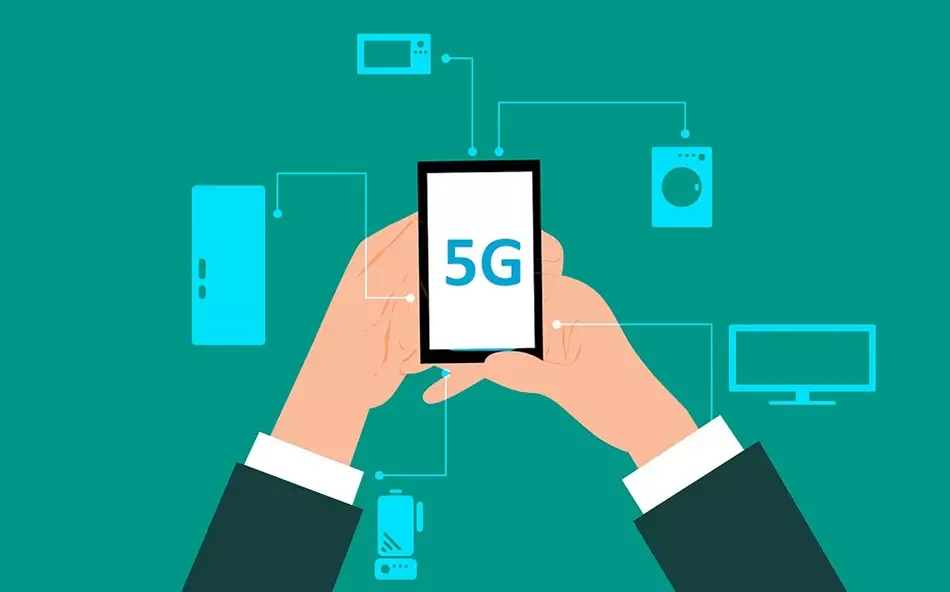
To put it simply, 5G is the fifth generation of communication technology, which is mainly characterized by ultra-broadband, millimeter-wavelength, ultra-low delay, and ultra-high-speed. 2G realized voice communication digitization, function machine has a small screen can send text messages; 3G realized multimedia communication other than voice and pictures, and the screen became larger so that you could see pictures. 4G has realized high-speed Internet access in the local area. Watching short videos is available for big-screen smartphones, but the signal is good in the city, but poor in the hometown. 1G~4G are all aimed at fast and convenient communication between people so that people dare to expect to participate in the whole world through live broadcasting. The performance aims of 5G are reduced latency, lower costs, high data rates increased system capacity energy savings.
The technical features of 5G
5G communicates through electromagnetic waves. The electromagnetic wave has a characteristic, the higher the frequency, the shorter the wavelength, the faster the rate, the worse the transmission ability. In this case, the transmission rate and the transmission capacity are mutually restricted. If the pure pursuit of speed is, then the theory of electromagnetic wave frequency can be increased. But it could be that 4G coverage, which previously required only one cell tower, could require four or more base stations with 5G. The cost of base stations has been the biggest stumbling block to 5G, but it is also an opportunity for mobile devices to operate. More equipment is not terrible, as long as someone pays the bill, the wool is on the sheep. What’s more, you can also use miniature base to replace the big base in the past, reducing costs. That is to say, Huawei and Qualcomm this war, is really significant. Whoever wins this war will win a lot of 5G orders.
The technological innovation of 5G mainly comes from wireless technology and network technology. In the field of wireless technology, large-scale antenna array, ultra-dense networking, new multiple access and full spectrum access technologies have become the focus of the industry. Large-scale antenna arrays can support dozens of independent spatial data streams by increasing the number of antennas on the basis of existing multi-antennas, which will improve the spectral efficiency of multi-user systems several times and play an important supporting role in meeting the capacity and speed requirements of 5G system.
How is 5G different from 4G?
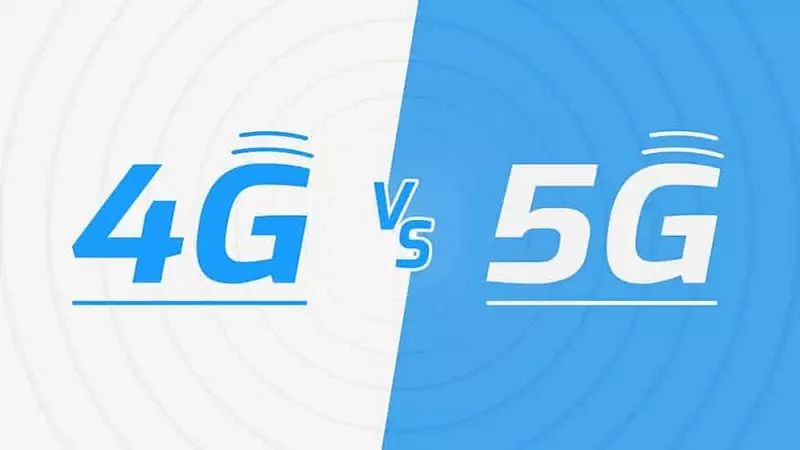
What’s the difference between 5G and 4G? 4G mobile networks have now entered a phase of rapid adoption, while 5G standards are beginning to emerge. So what’s the difference between 4G and 5G networks? Below to share the network 4G and 5G difference comparison, let’s have a look!
Difference between 5G and 4G networks
- Internet speed is the biggest difference. Currently, it is estimated that the speed of 5G network can reach 10G/s, 10 times faster than 4G, which means that we can download a high-definition movie in a few seconds using 5G network.
2. 5G aims to lay the foundation for fast and resilient connectivity, and offer ubiquitous connectivity, whether a user is in a subway station or skyscraper while previous mobile networks and 4G focused primarily on providing raw bandwidth.
3. 5G network is not alone, a various technologies such as M2M, Wi-Fi, LTE, 2G, 3G, and LTE-A will go along with it. That’s to say, 5G aims to support augmented reality, immersive gaming, connected wearables, and IoT;
4. 5G networks will lead virtual RAN and cloud RAN to facilitate a more centralized network with localized data centers;
5. 5G will also allow the network infrastructure to automatically decide the spectrum type to be offered and adapt to current conditions at a time specified.
3. How does 5G work
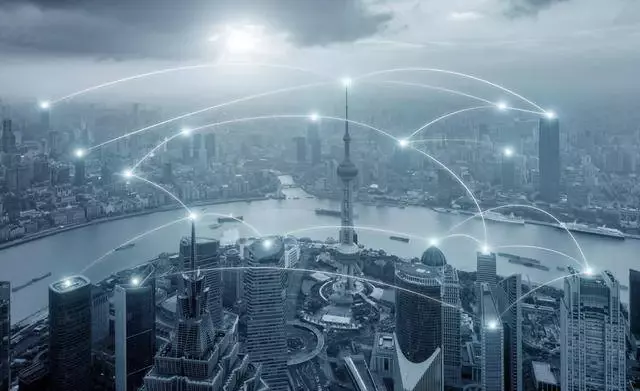
We’ve already known the principle of 5G, now let’s understand its working principle. First of all, see what’s a spectrum.
5G works on three different frequency bands, which have an unimaginable impact on your daily use.
The low band spectrum is also referred to as the sub-1ghz spectrum. While the low-bandwidth spectrum provides great coverage and wall penetration, there is one big drawback: peak data speeds of around 100Mbps.
Low latency and faster speeds are offered by the mid-band spectrum. The peak velocity is expected to reach 1Gbps on the mid-range spectrum.
The high-band spectrum is 5G’s highest performance, however, it has major drawbacks as well. It is often called a millimeter wave. Peak speeds of more than 10Gbps with extremely low latency can be offered by the high-bandwidth spectrum. The poor building penetration and small coverage area are the main weakness of the high wave section. This means that a large number of signal units are required to create an efficient high-bandwidth network.
The high-band spectrum is the largest for 5G.
4. 5G Internet of Things(IoT) challenges
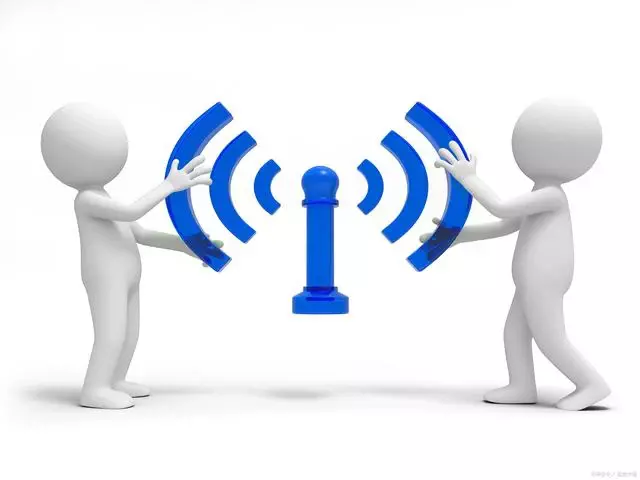
I. Risks of the security of the Internet of Things
(1) Security of devices in the Internet of Things: On the one hand, devices used in the Internet of Things often have a long life cycle, which makes manufacturers not produce the devices or stop updating their software services, which also means that the corresponding vulnerabilities will not be updated, thus increasing the risk of devices in the IoT being attacked. IoT is composed of different sensing nodes. These sensing nodes have limited resource space and cannot carry out complex algorithm encryption and install anti-virus software like desktop computers. In an unsupervised environment, sensing nodes are vulnerable to security attacks.
(2) Internet of Things information transmission security: RFID system consists of an electronic tag, reading and writing, antenna and the computer system components, such as in the use of radio frequency way of contact between the read/write device and an electronic tag two-way data transmission, due to read/write device reads the information in label is through radio frequency signal, radio frequency signal can’t distinguish between reading and writing are legal, Once the frequency of its own transmission matches that of the attacker, the attacker can read the tag without the owner’s knowledge, causing the information to be leaked.
It is well known that the corresponding devices of the Internet of Things often use 2.5g /5.8G open frequency radio channels, which are easy to be blocked and damaged, resulting in corresponding security risks. For the intelligent household, industrial application scenarios such as the Internet of things, the use of cameras, monitoring equipment tend to collect and process large amounts of data information, this information may be related to the user’s personal privacy and business secrets, once used by criminals, can bring great loss to the Internet users and cause bad influence.
2. New challenges brought by the application of 5G technology
First, the use of 5G communication technology requires upgrading the communication modules of existing IoT devices, thus raising the production cost of IoT devices. In Internet of things application scenario, often there are a lot of Internet equipment, through the corresponding communication between different IoT devices or network protocol to connect, enable each other to transmission of information, data and upgrade the new communication module, can lead to poor communication between the devices, resulting in damage and increasing the cost of Internet users.
Second, the upgrade of 5G communication technology has put higher demands on the ability of IoT devices to handle massive amounts of data. 5 g communication technology in the Internet of things application, can effectively promote the network information transmission rate and access to a lot of Internet equipment, at the same time, high speed communication network with a large number of Internet of things device can produce vast amounts of data need to process, for the use of small volume, low power consumption and low cost embedded system technology of Internet of things in terms of equipment, It doesn’t have the ability to efficiently process massive amounts of data. Finally, the application of 5G communication technology in the Internet of Things means that the Internet of Things devices are using public networks for information transmission. With the increase of access to users, the Internet of Things with weak security protection capability is facing higher security risks.
The continuous development of 5G technology has greatly promoted the development of the Internet of Things, but it has also brought a series of problems such as increased costs and network and information security. Believe that with the continuous development of 5 g technology and relevant industry, related chips and communication modules will decrease, the price of the IoT equipment security and the ability to deal with massive amounts of data will be improved, and with the expansion of the 5 g network coverage, Internet of things application scenarios, and there will be more broad space for development.
5. Introduction of each mobile communication version (1G, 2G, 3G, 4G, 5G)
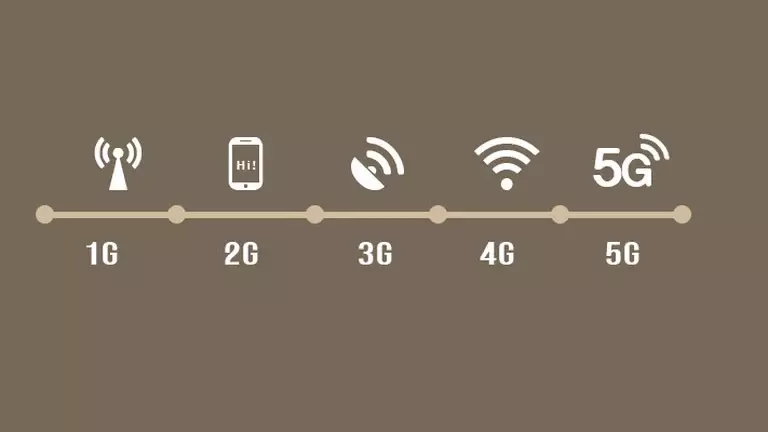
1G first generation mobile communication
The history of the 1 g:
In 1979, NTT firstly released the 1G cell phone in Tokyo, Japan in1979. And then Japan became the first country to be covered with the universal wireless network.
NMT established a wireless communication system in Sweden, Finland, Denmark, and Norway in 1981. People in different countries are then allowed to communicate by telephone.
MOTOROLA cell phones were used for the first time in the United States in 1983.
The characteristics of the 1 g:
Information can be modulated by either digital signals or analog signals 1G analog signals are used to transmit information
One gigabyte is only used to transmit voice phone messages. 2.4Kbps is the maximum transmission rate with a 150MHz frequency. However, sound quality and big delay problems are relatively poor in the meanwhile.
In Hong Kong movies and TV dramas of the early 1980s, it is common to see people who think that the mobile phone they are holding is the first generation of mobile phone products.
2G second generation mobile communications
2G GSM
In 1991, GSM technology was first introduced. It’s the digital modulation be used rather than analog modulation. At the same time, to achieve reuse, it uses CDMA and TDMA technologies to achieve reuse. GSM operates in the 900MHz band.
GSM has a maximum speed of 14.4Kbps on both uplink and downlink and supports both voice calls and SMS. Meanwhile, compared to GSM, the voice quality has been greatly enhanced.
2G network is identified as “2G”
2.5g GPRS
In ETSI in 1993, GPRS was released. GPRS utilizes Packet Switched technology. The technique is to transfer information into packets.
The upstream speed of GPRS is able to reach 26.8Kbps and the downstream speed can reach 53.6 Kbps. GPRS is allowed by this data transmission rate to introduce MULTIMEDIA Message Service. The technology enables users to receive and send messages like multimedia images. It also began to support IP access to the Internet.
2.75G EDGE(Enhanced Data for GSM Evolution)
Invented by AT&T in 2003
It can reach a maximum speed of 236.8Kbps downstream and 59.2Kbps upstream
EDGE introduces 8BPSK encoding technology
The symbol for EDGE is “E”, so an “E” on your phone means you are using an EDGE network.
2 g summary
2G introduced packet-switch technology and digital modulation.
3G Third generation mobile communication
WCDMA -UMTS
Japan’s NTT introduced the first 3G network uncommercially in 1998.
In 2001, the first commercial 3G network was operated by SK Telecom in South Korea. It uses Packet switching technology, CDMA, and operates on 850MHz,1900MHz, and 2100MHz.
Maximum speeds are dependent on mobility, such as 384Kbps for a mobile phone in a car or train, and 2MHz for a stationary connection. 3G introduced mobile Internet, video calling, online video and other services due to the enhanced speed.
The symbol for 3G is “3G”
Td-SCDMA is a short-term of Time division-Synchronous Code Division Multiple Access. It was first proposed by China and completed based on RTT as an international mobile communication standard.
SCDMA supports 3G services ranging from 8KB /s to 2Mb/s and video phone,higher rates of voice, Internet and other services.
3.5g – HSPA (High Speed Packet Access)
HSPA is an improved WCDMA technology at up to f 5.76Mbps and14.4 Mbps theoretically. But it actually moves 200Kbps up and 500Kbps down
The symbol for HSPA is “H”, so if an “H” is displayed on your phone, you are using HSPA network.
3.75 G – HSPA +
HSPA follows the HSPA technology and introduces MIMO. In other words, there are over one antenna is utilized to transferer signals and receive over one antenna meanwhile.
22Mbps can be its theoretical maximum uplink speed and 168Mbps can be its downlink speed because of the introduction of MIMO technology.
If an H is displayed on your phone, it means you are using an HSPA+ network.
4G fourth generation mobile communication
4G is also famous as LTE.
The history of 4 g:
The ITU began to standardize LTE in 2004.
LTE networks was released in 2005 and began to be rolled out In 2006.
In 2006, the first commercial 4G networks were installed in Norway, Stockholm, and Oslo.
LTE supports TDD and FDD, so it is often called as FDD-LTE and TDD-LTE. Enterprises and organizations from China have made many contributions to the development of TDD-LTE standards. TD-LTE is used by the three major operators for trial commercial use nationwide. China Unicom and China Telecom have carried out FDD+TD hybrid networking pilot in 16 cities respectively. In the future, FdD-LTE will be the mainstay of China Unicom and Telecom.
Wimax. The STANDARD for 4G is not only LTE, but Wimax is one of the standards for 4G. Wimax was published in Korea in 2006.
The standards war:
Wimax and LTE fought hard to take the initiative in 4G. It will also be a big loss for companies and operators that bet on Wimax, such as Taiwan.
The symbol for 4G is “4G,” so if it says 4G on your phone, you’re using 4G.
4G’s details:
LTE is on the basis of IP Packet switching network protocol.
MIMO and OFDMA technologies are utilized by LTE.
LTE’s theoretical downstream speed is 100Mbps and upstream speed is 50Mbps; LTEA’s downstream speed can reach 1Gbps and upstream speed can reach 500Mbps.
Wimax’s theoretical downstream speed is 128Mbps and upstream speed is 56Mbps
LTE supported band has a lot of, it includes 700/800/900/1700/1800/1900/2100/2600 MHZ.
4G has expanded many related application scenarios based on the low latency.
5G: the fifth generation of mobile communications
Why 5G is needed
There is a large amount of telemedicine applications, intelligent driving, higher speed, sensor applications, lower delay, and high number of connections of wireless communication network applications occurs due to the need of IoT.
5G Development History
In 2013, the first meeting of imT-2020 (5G) Propellant Group was held in Beijing
NTT DoCoMo officially announced on 2014 that it will cooperate with Nokia, Ericsson, Samsung, and other six manufacturers to start testing high-speed 5G network, which is 1,000 times the network capacity of the existing 4G network, and the transmission speed is supposed to improve to 10Gbps.
The first Global 5G Conference was held in Beijing on 2016.
The initial release of 5G NR was released at the 78th plenary meeting of 3GPP RAN on 2017.
3GPP 5G NR standard SA solution was officially lanched at the 80th TSG RAN Plenary session of 3GPP on June 13, 2018.
LG U+, KT, and SK simultaneously launched 5G services in South Korea on December 1, 2018.
The Ministry of Information and Industry Technology officially released 5G commercial licenses to China Telecom, China Mobile, China Radio, China Unicom and China Television on 2019.
The Ministry of Information and Industry Technology issued the communication Industry Statistics Bulletin 2021 in January 2022.
Take an overview of 5G
A New Radio frequency standard is used by 5G for definition. The biggest difference from previous generations of communication systems is the adoption of beamforming and Massive MIMO. 5G can work on a very wide range of frequencies. For the first time, 5G explicitly presents different application scenarios.
Beamforming
Beamforming is a concept that comes from adaptive antennas. In the signal processing of the receiving end, the desired signal can be formed by weighted synthesis of various signals received by the multi-antenna array element. It’s equivalent to forming a beam pointing upwards. For instance, the initial omnidirectional receiving pattern is transformed into a lobe pattern with zero and maximum pointing. The same principle applies to the transmitter.
A multi-antenna system is required if beamforming is to be used.
5 g band
The 5G spectrum can be divided into 400-1ghz, 6GHz,30GHz and 60GHz bands. sub-6ghz is frequencies below 6GHz, millimeter waves are operating frequencies above 6GHz. Mobility and high cell coverage are provided by low frequency; On the contrary, high capacity and speed are achieved by high frequencies.
6. What 5G actually does and Why 5G?

The arrival of fifth-generation network bandwidth has a larger purpose — to bring the world’s devices closer together and to build an intelligent IoT ecosystem. This is a meaningful step forward from 4G. Since then, 5G will not only increase this efficiency but also enhance device-to-device communication in factories and homes.
By 2030, 50 billion IoT devices are supposed to be deployed.
Yet markets are better prepared than you might think. The world’s leading service providers have published case studies on 5G usability. For example, the GSMA is providing slices of smart grid 5G networks as part of 106 global releases they have completed. What’s more, Ericsson also use 5G for commercial purposes like intelligent energy distribution, and mission-critical communications, etc.
What impresses most is loLIVE’s global network that power the IoT ecosystem via 5G. Patented SIM bootstrap technology is used by the platform to offer uninterrupted cellular connectivity to devices around the world.
How is 5G better?
5G will deliver 10 times faster and more powerful network bandwidth at nearly 20Gbps than 4G. Lightning-fast network speeds are important for the Internet of Things, as most devices operate only with real-time updates. Alarms, locking systems, cameras, doors, and other devices are all connected. Building this monitoring system can only be done if real-time updates are provided.
As data volumes grow at record rates, so should the infrastructure that transmits them. That’s what 5G offers.
Network slicing: Allocates bandwidth for specific service requirements
In conclusion, network slicing separates the available network bandwidth into multiple independent virtual networks. That makes IoT a combination of different software elements and different hardware.
The Internet in restricted areas shouldn’t be interrupted. Many of these private institutions have strict and exclusive requirements for security and QoS in the meanwhile. With the factories, research LABS, hospitals, and cloud-native core network, smart logistics can ensure compliance, worry-free security, and services.
Dedicated core networks at multiple locations can also be established within a country with multiple public Rans.
Unlock the world of Internet of Things and 5G opportunities
5G is growing at a record-breaking pace, aiming to build communications for a smarter future. IIoT, remote working, and smart cities are just some widely used cases for 5G adoption at the base layer.
7. What are the disadvantages of 5G?
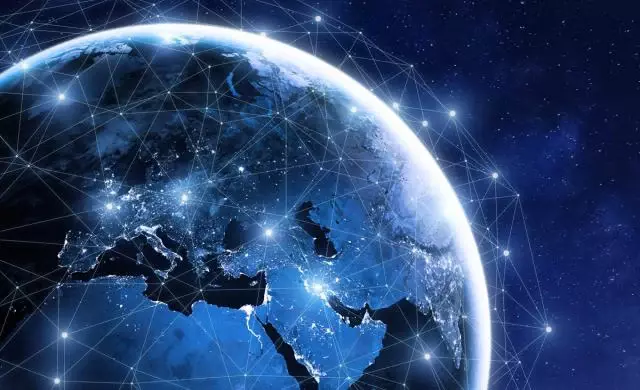
It’s hard to miss a common message from AT&T, Verizon and other carriers: 5G deployment is underway. Much of the focus now is on how 5G could change consumer behavior, such as downloading a movie in minutes. The impact of 5G will be multifaceted, with companies eventually benefiting from faster wireless connections without having to invest heavily in capex and going concerns. Enterprises need to understand the advantages and disadvantages of 5G networks as they prepare to comply with 5G standards and adopt related products and services:
The benefits of 5 g
1. Speed
Data rates of 5G are higher than 4G and 4G LTE. The actual speed an enterprise can achieve depends on a number of factors, including proximity to a coompanies to use services that were not available under the old standard, such as automation and advanced video conferencing capabilities. 5G not only offers higher speeds, but also something potentially more important: low latency.
2. Low latency
According to some trials, 5G greatly reduces the time (typically less than 5 milliseconds) to respond to commands. Applications and services will work the same way regardless of location, eliminating delays that affect real-time communication.
3. Capacity
5G supports simultaneous connections to many more devices than 4G. As a result, businesses no longer need to evaluate their Wi-Fi and cellular strategies as one or more proposals. With 5G, companies are able to switch between Wi-Fi and cellular connections with 5G.
4. A new generation of services on the basis of machine learning and artificial intelligence
5G will drive the rise of a new generation of interactive services based on artificial intelligence and machine learning. Video conferencing with augmented or virtual reality capabilities, for example, can simulate environments and help executives make better project decisions. Automation will make enterprises to rely on services that are more predictive than they are today.
5. Rethink the Web
5G will be the driving force that leads companies to reimagine networks. Branches of enterprises can use 5G as the main connection medium and adopt Internet services provided by multiple communication operators through SIM cards. Whether you work centrally in the enterprise or remotely from home, you can take advantage of additional automation and security features.
The drawbacks of 5 g
1. The security
5G’s transmission security algorithms are pretty comprehensive, but companies may face other network security issues. A large number of IoT devices and components connected to 5G networks will greatly increase the threats businesses face as cyber attackers seek to exploit vulnerabilities. The 5G devices themselves are also likely to attract their attention because the chips and other components designed to power them could be infected with malware by cyber attackers. Weighing the use of network slicing (a technology that creates virtual networks to host dedicated applications or services) for their 5G networks is required. For companies with low risk tolerance, dedicated 5G networks may be the best choice.
2. Operating expenditure and capital expenditure
Companies should upgrade network components and adopt processors that support higher speeds. Telecom vendors are expected to roll out 5G-compatible devices early next year, but companies will have to work hard to find ways to maximize 5G investments as much of their network infrastructure still relies on traditional equipment. Its price will be a key consideration as carrier and device pricing continues to change.
3. Uneven coverage
Despite continued 5G investments by telecom carriers, many parts of the COUNTRY won’t be covered by 5G for a long time. Businesses with offices in rural areas could be particularly vulnerable to 5G coverage gaps and will have to rely on a combination of traditional network connectivity technologies. As a result, those without ACCESS to 5G could be forced to wait for telecom operators to offer 5G services in their regions, which could be affected by competition from other operators.
4. Line of sight/penetration issues
5G’s high-frequency signals are more easily blocked by objects, so ensuring coverage of corporate offices and factory Settings will always be a problem. Companies may have to redesign and build facilities to ensure adequate services or build complementary radio spectrum networks (such as those based on the spectrum of citizen broadband radio services) that will allow them to extend the coverage and capacity of 5G networks.
5. Hype factor
Many companies may be overwhelmed by claims from carriers and suppliers about how 5G will affect their operations. They will have to spend a lot of time fully understanding how they intend to use 5G for maximum benefit and how to demonstrate the required return on investment (ROI). 5G is different from other technologies that were initially pushed by businesses and then adopted by consumers. In the case of 5G adoption, widespread enterprise adoption will be delayed until 5G-compatible devices are more widely used and true 5G services are provided by carriers. The relevance of 5G will only come if the standard (such as coverage, price points and supported devices) becomes ubiquitous.
8. IoT Application cases of 5G technology

The number of connected devices is growing rapidly with digital transformation in full swing. According to IDC data, there will be 152,200 IoT devices connected to the network every minute by 2025.
Let’s compare these features to existing 4G networks:
● Higher band throughput
● 100 times faster than current networks
● Delay reduced by 25 times
● The ability to support large-scale iot communications. It is anticipated that about 1 million Internet of Things devices are connected per square kilometer.
● The power consumption is reduced by 90%.
● Offer network slicing capability. The flexibility to design their network systems as per their needs is given to enterprises by network slicing.
All of these features make 5G networks adaptable to external environments, unlike the limited flexibility of their predecessors.
Intelligent manufacturing
5G will take industry 4.0 to a new level. The broad mobility, low latency, and high reliability required for production automation in open-pit mining and for critical tasks in automated vehicle control are only possible with ultra-reliable 5G networks.
The cell-based positioning system installs TRPS within the facility. Thus, signals may prevent communication loss and create signal redundancy even if one path is blocked.
IoT devices, AI, and sensors help boost productivity via advanced weather analysis. The smart adjustment mechanism automatically adjusts the control Settings to suit all weather conditions.
Energy loads will be managed more efficiently by smart grids. Energy costs and downtime can be minimized by IoT devices.
All of this involves moving large amounts of data seamlessly over the network with minimal delay.
The supply chain
Supply chains require a great deal of human supervision, especially during transportation to warehouses and movement within them. Individual product-level information will be enabled by 5G via IoT sensors. Hence, it gets easier to track cargo. Temperature and humidity of the trailer is also enabled to be remotely monitored.
Retail
By making it more personalized and situations, the retail shopping experience can be enhanced by IoT and 5G. It’s also possible for clients to ask for other products instead of awkwardly shouting. Inventory management can be automated by smart shelves that support the IoT.
There are no checkout systems and cashiers in the AmazonGo store as shoppers is required to download the app and scan it as they enter the store. Customers can automatically complete the billing process through their mobile devices. What customers pick up and what remains on shelves can be tracked by computer vision and data collected from the shelf sensors.
Wisdom city
Automation and connectivity are the basic premises of a smart city. Internet of things devices in commercial buildings and homes are using IoT devices widely.
IoT technology is deployed by Barcelona in waste and transportation management since 2012. The number of Wifi hotspots had increased by 62% to 670 by 2013. In the energy sector, they installed 19,500 smart meters.
They are modernizing transport with digital bus stops and parking systems. They built sensor systems into parking lots, which dramatically reduced congestion and emissions. They normally remain dim, brightening only when movement is detected. Lampposts also provide free Internet access and collect data on the city’s air quality.
Self-driving car
A lot of data exchange is required for autonomous vehicles to work properly. Information about lampposts also makes great difference. 5G networks will ensure that this data is delivered efficiently to vehicles without lag. As a matter of fact, cars will eliminate the need for traffic lights. And the development of smart cities and extensive 5G networks are required.
Health care
A single PET or MRI scan can be a huge file. Moreover, there are other records like vital signs, and other medication details. These records is usually required to be shared between some medical experts.
Networks with low latency and high reliability are needed to make sure the transmission.
5G IoT enabled wearable devices can also be remotely monitored. It’s convenient for patients with chronic diseases and reduces the burden on doctors as it enables them to monitor in real time.
Until 2025-2030, end-to-end 5G infrastructure implementations will not be available on public networks. However, companies are already building 5G networks to leverage the technology before the competition begins.
9. 5G IoT solutions

The number of connected devices is growing rapidly. According to IDCData, there will be 152,200 IoT devices connected to the network every minute by 2025. A strong network is significant for this data exchange though there will be more ways to improve efficiency later. 5G will not only support high-speed mobile communications but also make IoT data transmission more effective.
From 2018 to 2025, carriers and investors will bet around $1 trillion globally that 5G will become the de facto global wireless standard. That bet is certainly safe for a number of reasons, many of them related to the revolution 5G promises for the Internet of Things.
Here are six ways 5G is changing the Internet of Things:
5G is likeyly to change the world.
From 2018 to 2025, carriers and investors will bet around $1 trillion globally that 5G will become the de facto global wireless standard. That bet is certainly safe for a number of reasons, many of them related to the changes 5G promises for the Internet of Things.
The Internet of Things will be changed by 5G in six ways below:
1. Easier connections
While that’s a 100-fold increase in speed, it’s not the only obvious way 5G could improve on current protocols.
Watches, phones, Laptops, smart home devices, bathroom scales, and everything else we have connected to the Internet are using these routers to operate.
We’ll also need to use routers for the time being while carriers further develop our 5G infrastructure, and the devices made by Power Power will be able to stay connected while consuming almost no power.
2. New business models
One of the expected results of widespread 5G adoption is the new ways to serve wireless customers on all IoT devices.
Nokia said “Network slicing” would bring opportunities that 4G or earlier technologies could not.
Nokia predicts that web slicing could boost service providers’ operating margins by 5 percent and that up to 15 percent of current Internet users will be interested in premium service.
3. Help smart cities grow
The centers of our technological progress and economy are cities. By 2050, 68 percent of the world’s people will live in urban areas. It’s reported that about 75% of the U.S. GDP comes from its 100 largest metro areas.
Smart cities invest in things like our infrastructure, and 5G will help this concept mature. The designers will follow as below to create these cities :
1. Design towns from the ground up with big data and sensors.
2. Wireless technology can be used to help cars communicate with civic infrastructure.
3. Provide citizens and businesses with multiple alternative ways to distribute goods and information.
The implementation of 5G will facilitate the development of smoother, more powerful networks in cities and will help make technologies such as self-driving cars widely available.
4. Enhance agricultural management
In just a few years, artificial intelligence and IoT seem to have developed into fully realized products.
Microsoft regularly runs commercials touting the power of its AI to maximize crop yields and minimize the use of pesticides, fertilizers and water.
But artificial intelligence is only a small part of the equation. The IoT is the mechanism that acts as the eyes and ears.
Given that there will be 9.6 billion people in the world by 2050, investing in the Internet of Things now makes sense.
5. Improve resource management efficiency
For 5G, the agricultural focus is just the beginning, and a huge leap forward in connectivity and functionality. Companies considering using IoT for facility and resource management will find sensors more cost-effective than ever.
6. Connect to underserved communities
Both companies and customers will take advantage of 5G technology. Rural areas and urban centres around the world usually suffer from a lack of services and infrastructure though a large proportion of the population lives in remote communities.
Health wearables have been shown to be effective in helping at-risk populations solve health problems and improve patient outcomes.
10. The history of 5G
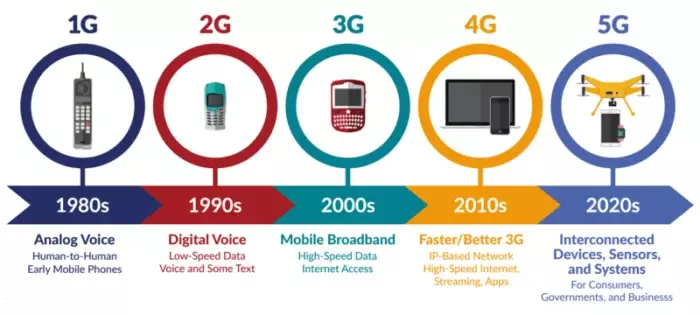
1. The 5G development history is as follows: the EU announced that it would invest 50 million euros in February 2013. Samsung Electronics Co., Ltd. announced that it has successfully developed the core technology of 5G on May 13 in the same year. The technology is able to transfer data at a speed of more than 1Gbps and can transmit data up to 2 kilometers.
2. Samsung has solved this bottleneck, which was previously considered a technical problem by the industry, with an adaptive array of 64 antenna units. Huawei started early research into the technology in 2009, and has shown off prototype 5G base stations in the years since.
3. Huawei announced that it would invest 600 million US dollars in innovation and R&D of 5G technology before 2018. NTT DoCoMo officially announced that it will work with Nokia, Ericsson, and other six manufacturers to start testing a high-speed 5G network on 2014.
4. The Daily Mail reported that the UK has carried out data transmission tests within 100 meters on March 1, 2015. The European Commissioner for digital Economy and Society, formally unveiled the EU’s vision for 5G company cooperation on March 3, 2015, Guzer Oettinger.
5. Odinger said the VISION of 5G public-private partnership involves not only the integration of fiber, wireless and even satellite communication networks, but also the use of technologies such as software-defined Networking (SDN), Network Function Virtualization (NFV), Mobile Edge Computing (MEC) and Fog Computing. On spectrum, the EU’s 5G public-private partnership vision will also designate hundreds of megahertz for network performance, with bands of 60 GHz and higher also being considered. The EU’s 5G network will be operational between 2020 and 2025.
6. 3GPP 5G NR standard SA solution was released at the 80th TSG RAN Plenary Session of 3GPP on June 13, 2018.
11. FAQ about 5G technology
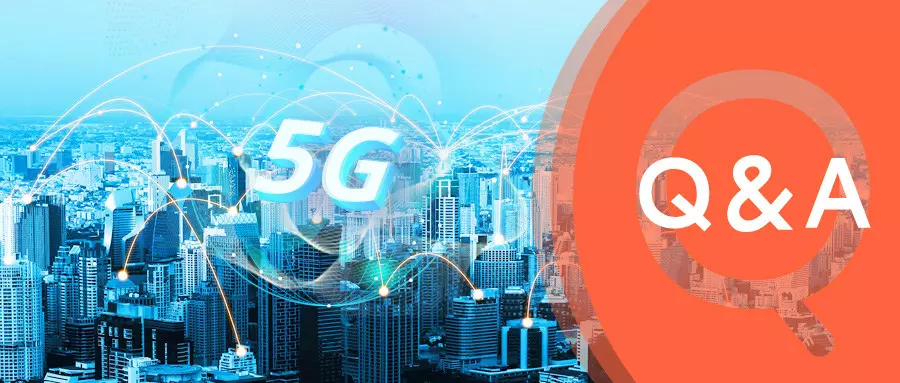
5G faces a variety of security problems and challenges with the changes of 5G network architecture and the enrichment of application scenarios.
I. Access security
Access control plays the role of protecting communication resources and spectrum resources. 5G’s support for various heterogeneous access devices and technologies makes 5G’s access control face great challenges. Specifically, 5G has the following urgent problems to be solved:
1. User/device authentication.
(1) Unified authentication framework across the underlying heterogeneous multi-layer wireless access network: parallel/simultaneous access from 3G, 4G, 5G, WiFi, small cell, macro cell, and the micro area will become normal. Hence, adopting a unified authentication framework to realize flexible and efficient two-way authentication applicable to various application scenarios is necessary.
(2) Frequent access of massive terminal devices: A large number of IoT devices will be used by vertical industries. Different from traditional terminals, IoT devices have a large number of devices, low computing capacity, and sudden network access characteristics.
2. Resist denial of service attacks.
Denial-of-service attacks aim to exhaust network resources. The damage to the network will be greater than that caused by traditional terminals if a hacker launches a distributed denial-of-service attack on a network with large amounts of IoT devices. Preventing or restricting excessive requests for resources can prevent DoS attacks from a certain extent.
2. Cybersecurity
Network slicing itself can be customized, thus minimizing resource consumption, saving costs, and improving the quality of service. 5G network can be divided into service slices and functional slices as per the functions realized by network slices. The flexibility of 5G network is reflected by the slicing. But providing a continuous security isolation mechanism for network slicing is required by 5G.
3. User security
User privacy protection is the most important issue in user security domain. Due to the wide variety of services provided by 5G, the open network architecture makes user data and personal privacy information face more severe tests. In traditional communication networks (mainly 3G and LTE), the Int L mobile subscriber identity (IMSI for short) of a user will be directly transmitted in the channel in plaintext when the user authenticates to the network for the first time, resulting in the destruction of user identity privacy. 5G systems are designed to avoid IMSI theft attacks and ensure the privacy of connected devices at all times.
The privacy problem 5G is facing is not only the privacy of users’ identity information, but also a series of personal and property-related privacy information generated during users’ use of the network.
4. Application Security
5G supports the connection of massive IoT devices. However, IoT devices often transmit small data packets frequently, which is bound to cause frequent signaling interaction between the core network and the access network.
5. Credibility and security
The 5G network will be open to a large number of third-party applications, so as to realize the interaction between the third-party applications and network. First of all, 5G will provide interfaces for network functions like session, mobility, and QoS, making it easier for third-party applications to complete basic network functions independently. Besides, 5G will open up MANO,in this way, third-party service providers can implement network orchestration capabilities. If trust problems occur in the process of opening authorization, malicious third parties will launch attacks on the entire 5G network through the obtained network control capabilities.
6. Safety management
1. Security context and key management
A security context is temporary status information set up by the network for devices. The purpose is to reduce the resource consumption for mutual authentication between devices when they switch between different states, and facilitate the devices to quickly switch from idle state to connected state and communicate securely. In 5G, device movement and switching between different access networks need to consider the migration and management of the security context. Different networks support different cryptographic algorithms during the migration. Moreover, the security context is limited by the computing capacity of the device in the small-data communication mode.
2. Security arrangement
Choreography is the coordination of activities in the business process via a central control node to control the overall effect. The output of one service can be used as the input of another, thereby enabling service composition and ultimately meeting changing user needs. Orchestration is widely used in converged infrastructure, SOA, platform virtualization, and more. In addition, choreography determines the topology of the network/particular service, and choreography itself determines where security mechanisms and policies are deployed. Adequate security need to be provided in the choreography process.
3. Certificate management
5G will introduce PKI to enhance the protection of mutual authentication and user identity confidentiality between network nodes. The introduction of PKI makes the system have to maintain a large CA system, on the one hand, the CA capacity requirements are high; On the other hand, there will be a series of certificate management costs, such as a large number of concurrent certificate application, certificate update, certificate revocation and so on. In addition, 5G is also facing security challenges and impacts brought by the upgrading of PKI.
4. Password algorithm
A cryptography algorithm is an essential component to guarantee secure communication. Nowadays, s series of symmetric cryptography algorithms have no security problems. However, 5G is required to expand the key length based on the future development trend and consider the quantum security of the algorithm. Therefore, it is necessary to improve the adaptability of the cryptographic algorithm. Meanwhile, lots of algorithms in 4G cost a lot of calculation, a series of lightweight cryptographic algorithms should be considered. However, 3GPP also has attribute-based encryption and recommends the use of a large number of public key cryptography algorithms. Huge security challenges will be encountered by these algorithms.
These authentication methods improve the user’s convenience but the evaluation of their security needs to be further carried out. Because of the uniqueness and non-substitutability of biometric information, the consequences caused by biometric information leakage are far more serious than password leakage.
Past research has shown that interactions between multiple entities are the most vulnerable to security problems. The system often has no security isolation mechanism, and the exposure of devices in the Internet environment increases the attack interface because of the limited resources of devices in the Internet of Things. In the interaction scenarios of smartphones, cloud services and Internet of Things devices, the exploration and solution of new security problems will also be the direction of future research.
















